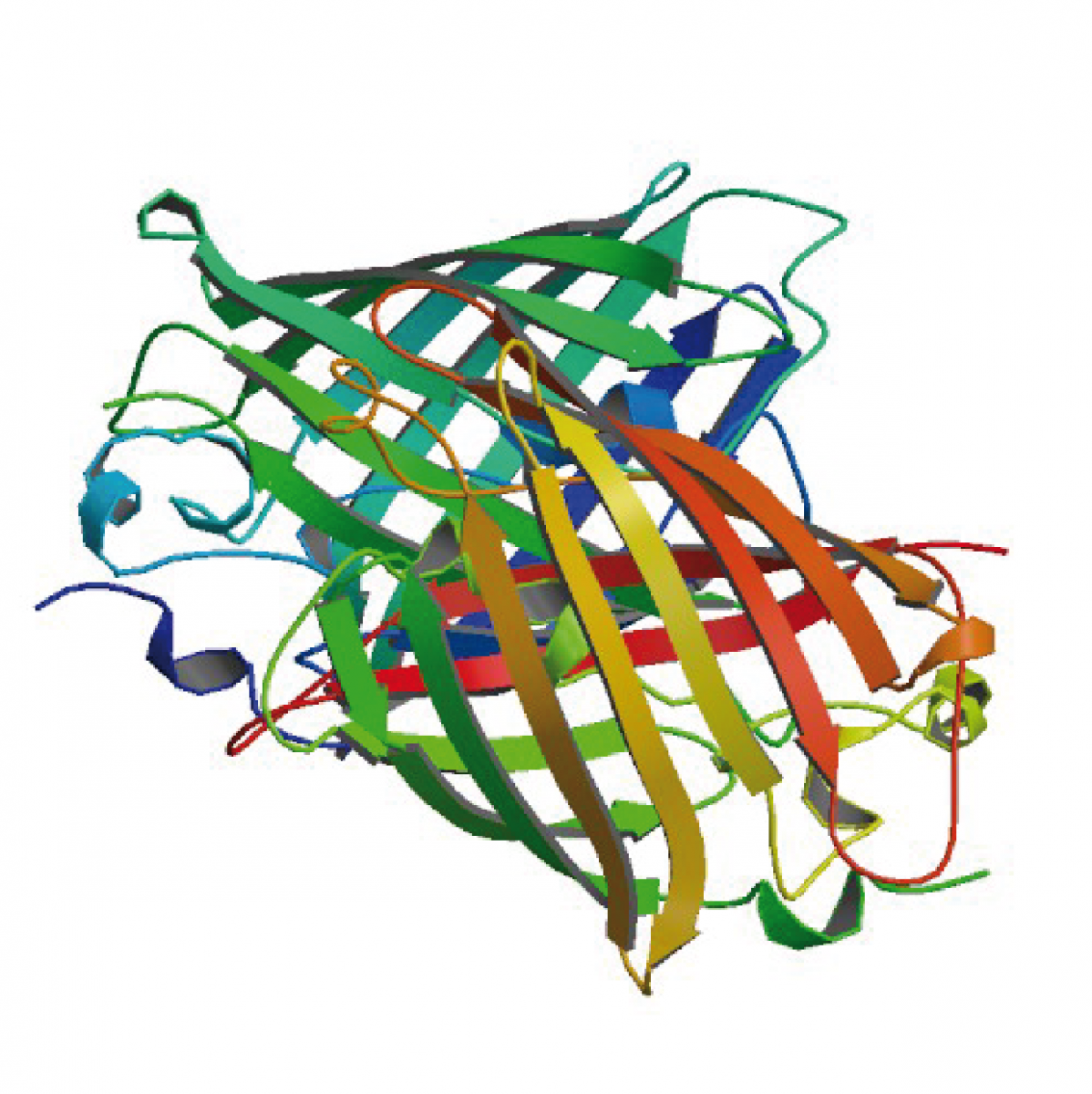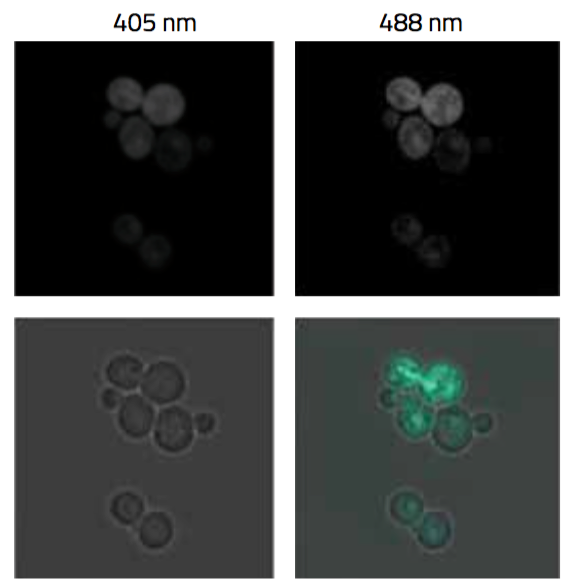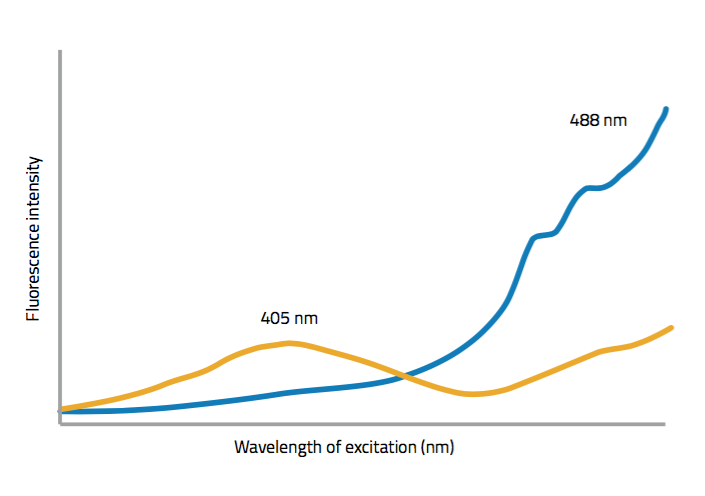Cellular redox – living chemistry Understand article
Learn how fluorescent biosensors can monitor the chemistry inside living cells.
We tend to think about reduction and oxidation (redox) reactions as pure chemistry. In living cells, however, reduction is just a gain in electrons and oxidation is a loss of electrons. Redox reactions have important roles in a wide range of biochemical processes. Unbalanced cellular redox reactions are involved in several diseases, so maintaining a balance in these reactions is critical for our health.
Consider the following two half reactions:
C ⇌ C4+ +4e–
O2+4e– ⇌ 2O2-
In one, the carbon is oxidised, and in the other, the oxygen in reduced. Together, the two equations describe a redox reaction that looks like simple chemistry. However, this reaction is happening in our bodies all the time.

Green fluorescent protein
(GFP) from the jellyfish
Aequorea victoria.
Image courtesy of Protein Data
Bank (PDB ID: 1GFL)
A typical redox reaction
In redox reactions, electrons are transferred between chemical species. For example, in the explosive thermite reaction, which is sometimes used to weld railways, electrons are passed from metallic aluminium to ferric oxide:
Fe2O3(s) + 2Al(s) → Al2O3(s) + 2Fe(l)
This change becomes clearer if we remove the oxygen atoms from the equation:
2Fe3+ + 2Al → 2Al3+ + 2Fe
We can see that the aluminium atoms lose electrons (become oxidised) and that the electrons pass to the iron ions in ferric oxide, reducing them. In principle, every redox reaction consists of two halves: the oxidation half (in this case, the Al/Al3+ couple) and the reduction half (here the Fe3+/Fe couple).
Biological redox
Metabolism
The thermite reaction demonstrates that spontaneous redox reactions release energy, which can be useful in the body. The two half equations at the beginning of the article are actually just a different way of describing cellular metabolism. When you eat, food is broken down into sugars such as glucose. Inside the cell, these sugars are oxidised, transferring electrons to O2. An alternative way of writing the equation is:
C6H12O6(s) + 6O2(g) → 6CO2(g) + 6H2O(l) + energy
In this equation, 48 electrons move from the carbon atoms in the sugar to the oxygen atoms, releasing energy to drive even more redox reactions along the way. Maintaining a balance in these reactions is critical for normal cellular function; if the equilibrium moves too far to either side of the reaction, there can be unwelcome consequences such as disease.

Image courtesy of Prince S Amponsah (DKFZ Heidelberg)
Cellular communication
For a long time chemically reactive molecules containing oxygen, known as reactive oxygen species (ROS), which can alter the redox state of a cell, have been regarded as unwanted and damaging by-products of cellular metabolism. Normally, the cytoplasm in cells is kept in a reduced state; a shift to a more oxidised state has been implicated in several diseases, including cancerw1.
However, some ROS also have important beneficial roles as signalling molecules and are thus essential to organismal health. Thousands of different ROS molecules are used as messenger signals to enable cells to communicate. Examples include superoxide (O2–), hydrogen peroxide (H2O2) and nitric oxide (NO.), which are normally produced in a controlled manner and have roles in processes such as wound healing, ageing, inflammation and programmed cell death (apoptosis).
Redox and cancer
In cancer, cells divide uncontrollably and proteins behave oddly, such as appearing or disappearing unexpectedly. Redox reactions have been implicated in the formation of cancer, for example by damaging our DNA, and ROS have been reported to either activate the expression of genes whose proteins promote cancer (oncogenes) or deactivate tumour suppressor genes, whose proteins do the opposite. ROS can also oxidise proteins, directly altering their structure and therefore function. If these proteins are important to the division or movement of cells, then cancer might appear.
Once a tumour has developed, redox mechanisms can also be exploited in treatment. Many anti-cancer drugs attack tumours by increasing the production of ROS inside malignant cells, which eventually kills them. However, cancer cells typically increase the production of their anti-oxidant defence systems, counteracting such an effect.
Redox mechanisms may also be responsible for resistance to therapy, when available drug treatments don’t work. To attack tumours efficiently, these drugs use the body’s transport proteins to reach their target location (for example, where malignant cells are). However, redox reactions could alter these proteins, rendering them non-functional and interfering with the therapy.
These are just some of the reasons why understanding biological redox reactions and how cells achieve redox balance may help in the fight against cancer.

Image courtesy of Prince S. Amponsah (DKFZ Heidelberg)
Shining a light on redox reactions
To understand how different factors interact in healthy and diseased cells, we visualise the redox processes in cells using versions of a fluorescent jellyfish protein known as green fluorescent protein (GFP). In the 1960s and 1970s, researchers discovered GFP in the jellyfish Aequorea victoria and modified it to produce different colours. This work was later awarded the Nobel Prize in Chemistryw2.
Using some genetics, we can now make cells produce fluorescent biosensors based on GFP for use in monitoring cells’ redox states. One such biosensor is a variant of GFP called roGFP2, which can be modified with different protein segments to achieve specific goals. For example, it can be targeted to specific locations in the cell (e.g. cytosol or mitochondria) by adding trafficking sequences (figure 1). Alternatively, a specialised biosensor for a particular redox molecule can be generated by adding a specific protein segment that reacts with that redox species.

To measure H2O2 levels in cells, we use the Orp1-roGFP2 sensor (figure 2). The sulfur of the Orp1 part of the biosensor reacts with the peroxide and the protein becomes oxidised, creating disulfide bridges that change the shape of the protein and thus reduce its fluorescence in the measured range (figure 3).
By using these modified GFP proteins, we can see in real time where the redox species travel in cells and how they influence or maintain the redox state, both in healthy individuals and in cancer patients. This can help us understand the dynamics of our cells when we are healthy and if we develop cancer. Perhaps one day we can use our findings to suggest new treatments for the disease.
Web References
- w1 – The group of Professor Tobias Dick at the German Cancer Research Center (DKFZ) investigates redox regulation in normal and cancer cells. To read more about their research, see: www.dkfz.de/en/redoxregulation/index.php
- w2 – More information on the 2008 Nobel Prize in Chemistry for the discovery and development of GFP is available from the Nobel Prize website. See: http://tinyurl.com/7y8df4s
Resources
- More on GFP can be found at:
- Furtado S (2009) Painting life green: GFP. Science in School 12: 19–23.
- To learn more about chemical redox reactions, visit: http://tinyurl.com/d65vdx6
- For an activity about the genes involved in cancer, see:
- Communication and Public Engagement team (2010) Can you spot a cancer mutation? Science in School 16: 39-44.
Review
Knowing the redox reactions taking place in living cells is important to understand many cellular mechanisms such as ageing, inflammation, apoptosis and cancer.
This article describes how biosensors, some of which are based on GFP, can be used to detect the level of the chemical species participating in a redox reaction and therefore to understand the dynamics of our cells.
The article could be used to explain lab techniques used in molecular biology as well to form the basis for discussions around the role of antioxidants and the use of GFP in biology. Comprehension questions around the article could include:
- In cellular respiration, which element is oxidised and which element is reduced?
- Demonstrate how 48 electrons are exchanged in cellular respiration.
- What are reactive oxygen species?
- Describe the roles of superoxide, hydrogen peroxide and nitric oxide in the cell.
- Describe how reactive oxygen species could be used in cancer therapy.
Monica Menesini, Liceo Scientifico A Vallisneri, Italy





